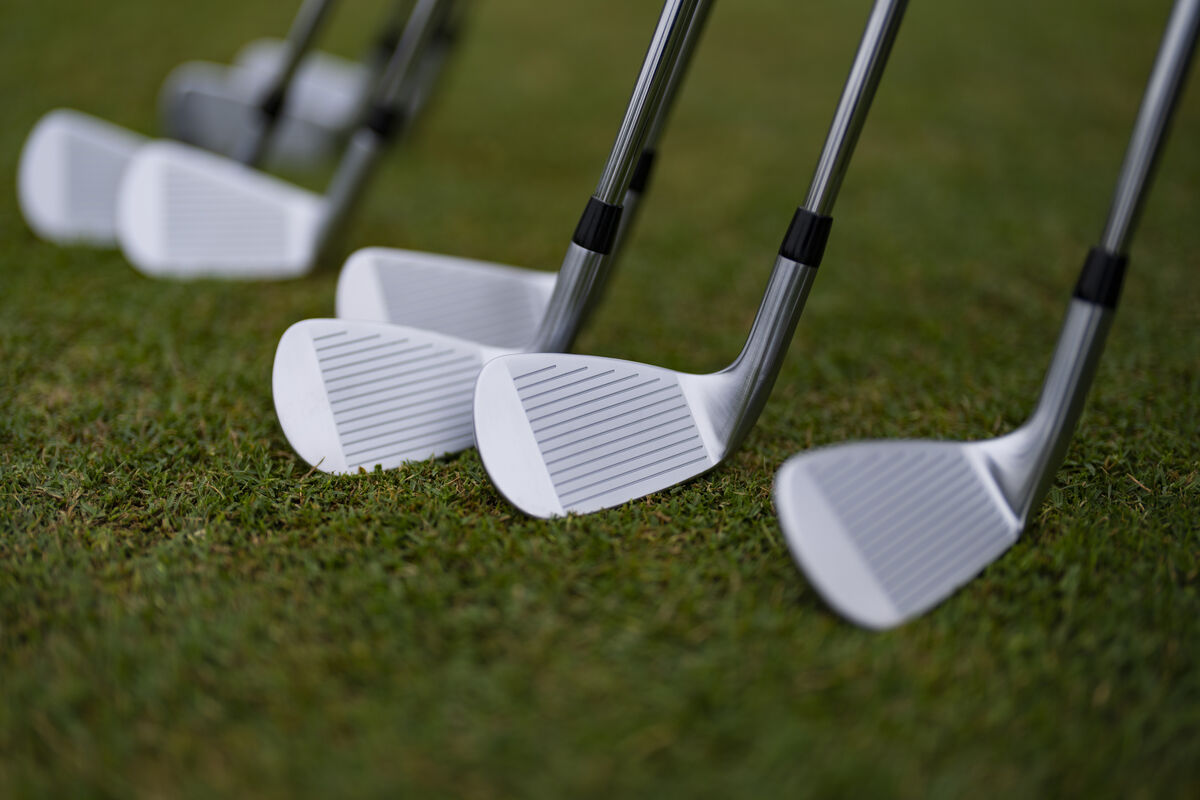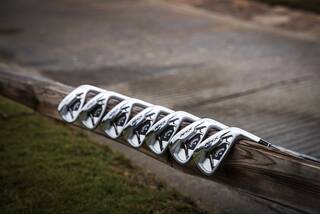Loft and Length of Every Golf Club, and How to Measure Them
Here are the standard lofts and lengths of every golf club

Two important factors when shopping for new golf clubs are the length and loft of the clubs. Golf club length is a measurable fitting tool that should be customized to the player. The loft of your clubs is a major factor in determining the distance you hit each club. It’s important to be familiar with both loft and length, so here’s an overview as well as how to measure your clubs with accuracy.
Golf Club Loft Chart
This chart shows the typical lofts you can expect to find on every club for men, women, and juniors.
| Club | Men's Loft | Women's Loft | Junior Loft |
| Driver | 9-12.5 | 12-13 | 14-16 |
| Strong 3-Wood | 13 | - | - |
| 3-Wood | 15 | 19-21 | 20-23 |
| 4-Wood | 17 | - | - |
| 5-Wood | 18 | 20-22 | 21-24 |
| 7-Wood | 21-22 | 22-23 | - |
| 2 Driving Iron | 16-17 | - | - |
| 3 Driving Iron | 19-20 | - | - |
| 4 Driving Iron | 22-23 | - | - |
| 2 Hybrid | 16-17 | - | - |
| 3 Hybrid | 19-20 | 22-23 | - |
| 4 Hybrid | 22-23 | 26-27 | - |
| 5 Hybrid | 24-25 | 27-28 | 26-28 |
| 6 Hybrid | 25-26 | 30-31 | 27-29 |
| 3-iron | 19-21 | - | - |
| 4-iron | 20-23 | - | - |
| 5-iron | 24-26 | 30-31 | - |
| 6-iron | 26-29 | 31-32 | - |
| 7-iron | 30-33 | 32-34 | 32-36 |
| 8-iron | 32-36 | 35-38 | 36-40 |
| 9-iron | 37-41 | 40-43 | 40-43 |
| Pitching Wedge | 44-47 | 45-49 | 43-47 |
| Gap Wedge | 50-52 | 50-54 | 50-54 |
| Sand Wedge | 54-58 | 55-58 | 55-58 |
| Lob Wedge | 60-64 | 60-64 | 60-64 |
| Putter | 3.5-4.5 | 3.5-4.5 | 2-3 |
What is Loft

The loft of a golf club is the angle between the club face and shaft
The loft of a golf club is the face angle in relation to the shaft line (perpindicular to the ground).
With rare exceptions, putters are the least-lofted golf clubs, with just a few degrees of loft. To the naked eye, the putter face appears to be perpindicular to the ground, because it has just a few degrees of loft.
The loft of each club impacts the trajectory of your shot. Lower-lofted clubs produce lower, more penetrating shots that fly farther. Higher-lofted clubs produce higher shots that do not fly as far.
Loft, specifically in irons, varies by manufacturer. The constant is that game improvement irons are usually stronger (lower) in loft than players irons like muscle backs and blades.
For example, a TaylorMade Stealth (game improvement) 7-iron has 28 degrees of loft while the TaylorMade P790 (players) 7-iron has 30.5 degrees of loft, but both clubs are 7-irons. The reason for this is that game improvement irons are created for players who need more help with distance than players who fit into more advanced clubs.
Iron loft has changed significantly through the decades. Mainly, lofts have become stronger, which allows manufacturers to sell "more distance" since a 28-degree 7-iron produces more distance than a 30.5-degree 7-iron, when everything else is the same.
In addition, shaft technology, paired with the stronger lofts, allows players to hit the ball higher while adding distance. Here is an example of how some popular Titleist 7-iron lofts have changed through the past 30-plus years:
- Tour Model (1985) 7-iron: 37 degrees
- DCI Black (1993) 7-iron: 36 degrees
- AP1 (2003) 7-iron: 33 degrees
- 718 AP1 (2018) 7-iron: 30 degrees
The important thing to remember about lofts is that they should be gapped appropriately to accommodate the top and bottom of your bag (your hybrids and wedges). High-handicap players shouldn’t get too caught up in the loft of their irons as long as a certified club fitter is getting you properly fit.

Golf Irons Explained: Types and How to Choose
Golf Club Length Chart
This chart shows the standard lenghts of every golf club for men, women, and juniors. This chart assumes steel shafts in the irons, but irons with graphite shafts are typically about one-half-inch longer than steel-shafted irons.
Length of junior clubs can vary by child's height. Always be sure to have your junior golfer measured by a club fitter to determine the length of club they should use.
| Club | Men's Length | Women's Length | Junior Length |
| Driver | 45.5" | 44.5" | 35-41" |
| Strong 3-Wood | 43.5" | - | - |
| 3-Wood | 43.25" | 41" | 35-41" |
| 4-Wood | 43" | - | - |
| 5-Wood | 42.5" | 40" | 34-39" |
| 7-Wood | 42" | 39" | - |
| 2 Driving Iron | 40" | - | - |
| 3 Driving Iron | 39.5" | - | - |
| 4 Driving Iron | 39" | - | - |
| 2 Hybrid | 41" | - | - |
| 3 Hybrid | 40.5" | 39.5" | - |
| 4 Hybrid | 40" | 39" | - |
| 5 Hybrid | 39.5" | 38.5" | 32-38" |
| 6 Hybrid | 39" | 37.5" | 34-40" |
| 3-iron | 39" | - | - |
| 4-iron | 38.5" | - | - |
| 5-iron | 38" | 37" | - |
| 6-iron | 37.5" | 36.5" | - |
| 7-iron | 37" | 36" | 31-35" |
| 8-iron | 36.5" | 35.5" | 30-34" |
| 9-iron | 36" | 35" | 30-34" |
| Pitching Wedge | 35.5" | 34.5" | 30-35" |
| Gap Wedge | 35.5" | 34.5" | 31-36" |
| Sand Wedge | 35.25" | 34.25" | 29-33" |
| Lob Wedge | 35.25" | 34.25" | 27-32" |
| Putter | 34" | 32" | 26"-31" |
What is Length
All golf clubs have a standard length based on the set. And while there is no set standard of club length for each iron, manufacturers are all fairly consistent with each other. Club lengths vary to accommodate the loft of each club, the two numbers essentially work together to produce optimal results.
Your longest clubs, in terms of distance, are also your longest clubs in terms of length. As you progress through a set of irons from the longest irons (3 and 4-irons) to your shortest (8 and 9-irons), the lengths get shorter with each club.
How To Measure the Length of a Golf Club
Knowing the length of your golf club is one thing, but knowing how to properly measure each club is another. Here is the easiest and most accurate way to measure your golf clubs.
- A meter stick is the best tool for the job. Alternatively, use a tape measurer, or a cloth tape measurer. A ruler will not work.
- Place the club so that the center of the face is touching the floor. This applies to woods, irons, and putters.
- Once you have the club centered, hold the meter strick along the shaft, and note the measurement at the end of the grip. This is the total length of your club
Tip: Always be sure your grip is fully installed on the shaft to have the most accurate measurement